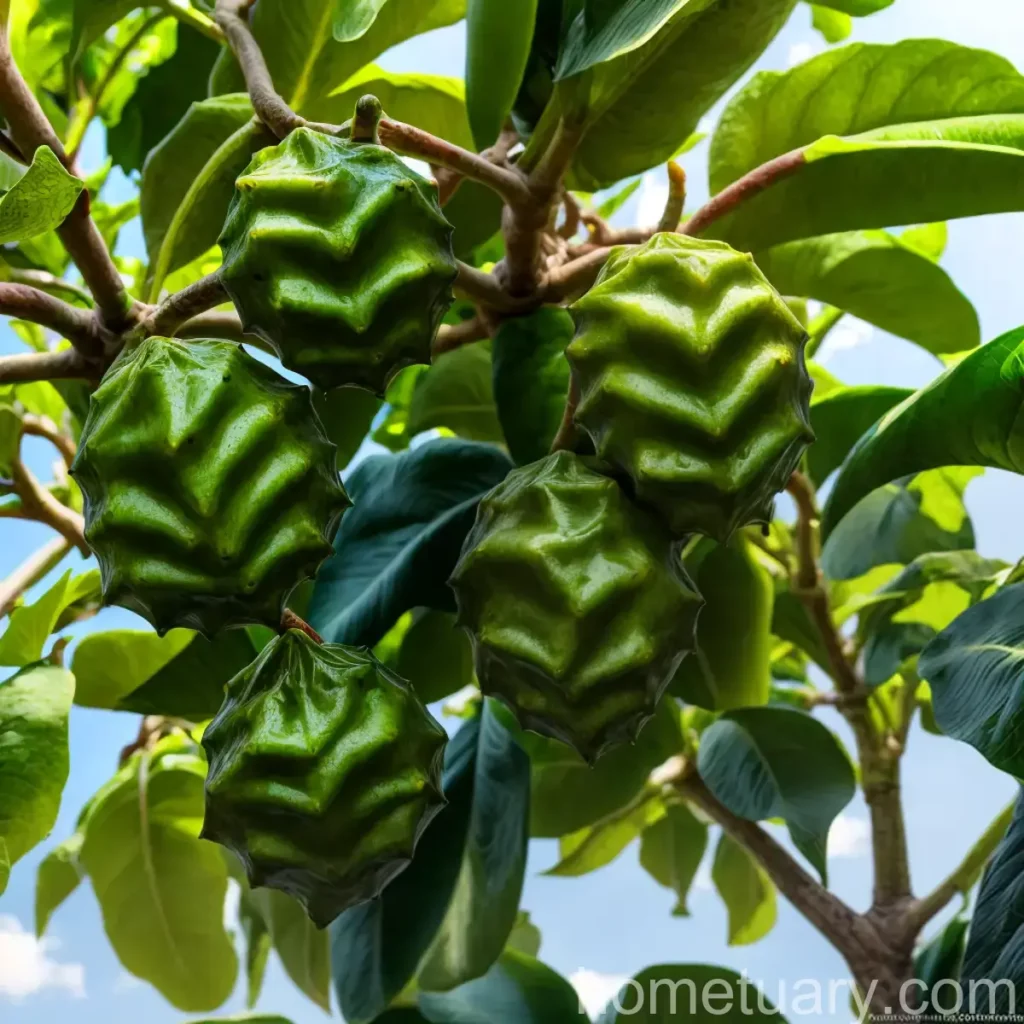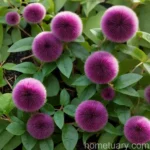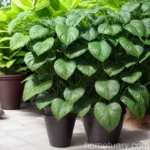The Fascinating World of Noni (Morinda citrifolia)
As a plant scientist, I have had the pleasure of working with numerous plant species, each with its own unique characteristics and qualities. Today, I am excited to delve into the world of noni (Morinda citrifolia), a captivating plant that has garnered attention for its various uses and benefits. In this comprehensive guide, we will explore the culture, uses, cultivation, care, common diseases, and interesting facts about the noni plant. Whether you are a seasoned horticulturist or an avid plant enthusiast, there is something intriguing to discover about this remarkable species.
What is Noni (Morinda citrifolia)?
The noni plant, scientifically known as Morinda citrifolia, is a small tree native to Southeast Asia, Australia, and the Pacific Islands. It belongs to the Rubiaceae family, which also includes coffee and gardenia plants. The noni tree is characterized by its glossy, dark green leaves and unique, pungent-smelling fruit. The fruit itself is bumpy, yellow-green when ripe, and has a strong, slightly unpleasant odor.
Key Takeaways – Noni (Morinda citrifolia)
Before delving deeper into the specifics, let’s take a moment to highlight some key takeaways about the noni plant:
- Scientific Name: Morinda citrifolia
- Family: Rubiaceae
- Native to: Southeast Asia, Australia, and the Pacific Islands
- Characteristics: Glossy, dark green leaves and bumpy, yellow-green fruit with a pungent odor
- Uses: Medicinal, culinary, and ornamental
Now that we have a foundational understanding of noni, let’s explore its culture, uses, and cultivation in detail.
Culture
Understanding the cultural requirements of the noni plant is crucial for its successful growth and development. Whether you are considering adding a noni tree to your garden or are interested in cultivating it for its uses, being mindful of its cultural needs is essential.
Water
Noni plants thrive in well-drained soil and require regular watering to keep the soil consistently moist. However, it’s important to avoid waterlogging, as this can lead to root rot and other issues. During dry periods, it’s advisable to water the noni plant deeply to ensure adequate moisture reaches the roots.
Sunlight
For optimal growth, noni plants appreciate full sun exposure. Placing the plant in a location where it receives ample sunlight throughout the day is ideal. In regions with extremely hot climates, providing some partial shade during the hottest part of the day can be beneficial to prevent stress on the plant.
Fertilizer
When it comes to fertilizing noni plants, using a balanced, slow-release fertilizer can support healthy growth and fruit production. Applying fertilizer during the growing season, following the manufacturer’s instructions, can help ensure the plant receives the necessary nutrients for robust development.
Soil
Noni plants favor well-draining, slightly acidic soil. A loamy soil type is often recommended, as it provides good drainage while retaining sufficient moisture. Before planting a noni tree, consider amending the soil with organic matter to improve its texture and fertility.
Uses
The noni plant is renowned for its diverse uses, ranging from medicinal and culinary to ornamental. Let’s explore some of the primary uses of the noni plant in more detail.
-
Medicinal Uses: Noni has been traditionally used in various cultures for its medicinal properties. From immune system support and digestion to skincare and pain relief, noni is revered for its potential health benefits.
-
Culinary Uses: While the pungent odor of noni fruit may deter some, it is utilized in certain cuisines for its unique flavor and potential nutritional value. Noni fruit can be consumed raw, juiced, or used in cooking, though its strong scent may not appeal to everyone.
-
Ornamental Purposes: The noni tree’s glossy leaves and distinctive fruit make it an intriguing addition to gardens and landscapes. Its ornamental value adds a touch of exotic charm to various outdoor settings.
Cultivation
Cultivating noni plants requires attention to several key factors, including soil, water, sunlight, and fertilizer, as previously discussed. In addition to these cultural aspects, proper pruning, propagation, and container considerations play a role in successful noni plant cultivation.
Pruning
Pruning noni plants is essential for maintaining their shape, promoting air circulation, and managing their size. Removing dead or damaged branches and controlling the overall growth of the plant through selective pruning can contribute to its health and vigor.
Propagation
Noni plants can be propagated through various methods, including seed propagation, stem cuttings, and air layering. Each technique has its own set of considerations and best practices, and selecting the most suitable method for your specific circumstances is crucial for successful propagation.
Container Cultivation
For those with limited outdoor space or for individuals in colder climates, growing noni plants in containers can be a viable option. Selecting a spacious container with proper drainage, using high-quality potting mix, and providing adequate sunlight are important factors to consider for successful container cultivation.
Popularity
The noni plant’s popularity has grown in recent years, largely due to its purported health benefits and unique aesthetic appeal. As interest in natural remedies and exotic fruits continues to rise, the noni plant has captured the attention of gardeners, health enthusiasts, and researchers alike.
Common Diseases and Pest Management
Like all plants, noni is susceptible to certain diseases and pests that can impact its overall health and productivity. Understanding common diseases and pests affecting noni plants and implementing appropriate management strategies is essential for preserving the plant’s well-being.
Disease Diagnosis
Common diseases that may affect noni plants include leaf spot, powdery mildew, and root rot. Regular monitoring and prompt identification of symptoms can aid in diagnosing and addressing potential disease issues early on.
Common Pests
Noni plants may be vulnerable to pests such as aphids, mealybugs, and scales. Monitoring for signs of pest infestations and employing suitable pest control measures can help mitigate the impact of these insects on the plant’s health.
Botanist’s Tips
Drawing from my experience and expertise, here are some botanist’s tips for cultivating and caring for noni plants:
-
Consistent Moisture: Maintaining consistent soil moisture, avoiding both drought stress and waterlogging, is crucial for noni plant health.
-
Regular Pruning: Engage in regular pruning to remove dead or diseased branches and encourage robust growth.
-
Sunlight Exposure: Providing adequate sunlight is key for noni plants to thrive and produce healthy fruit.
-
Quality Soil: Using well-draining, nutrient-rich soil can greatly benefit the growth and development of noni plants.
Fun Facts
As we conclude our exploration of the noni plant, here are some intriguing fun facts to pique your interest:
-
The noni fruit is sometimes referred to as “cheese fruit” due to its strong, pungent odor resembling aged cheese.
-
Noni plants have a rich history of traditional medicinal uses in various cultures, earning them the nickname “the queen of health plants.”
-
Some noni enthusiasts believe that the fruit’s potent smell indicates its powerful healing properties, contributing to its revered status in certain natural health communities.
Links to External Resources
For further reading and research on the noni plant and its uses, I recommend exploring the following resources:
- Morinda citrifolia (Noni): A Review of the Scientific Validation of Noni
- Tropical Plant Database – Noni (Morinda citrifolia)
- Noni Research – National Institutes of Health
- Hawaiian Noni – Traditional and Modern Uses
In conclusion, the noni plant, with its unique characteristics and diverse uses, is a captivating subject for plant scientists, horticulturists, and enthusiasts alike. Whether you are drawn to its medicinal potential, intrigued by its culinary applications, or simply appreciate its ornamental value, the noni plant continues to fascinate and inspire with its versatility and allure. I hope this comprehensive guide has shed light on the intriguing world of noni, offering valuable insights into its culture, uses, cultivation, care, and beyond.
As we continue to explore the intricate beauty of plant life, the noni plant stands as a testament to the captivating wonders that nature has to offer.
“The noni plant, with its unique characteristics and diverse uses, is a captivating subject for plant scientists, horticulturists, and enthusiasts alike. It continues to fascinate and inspire with its versatility and allure.”















